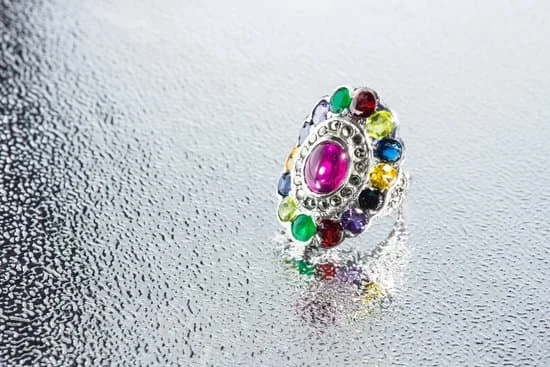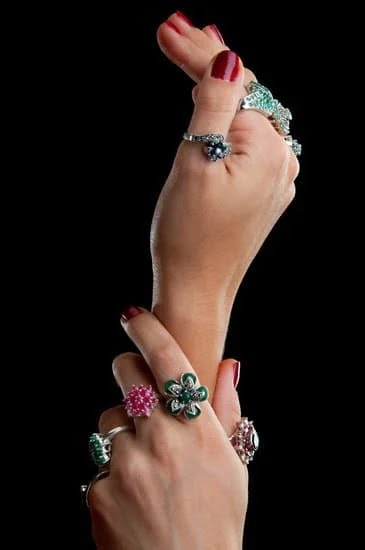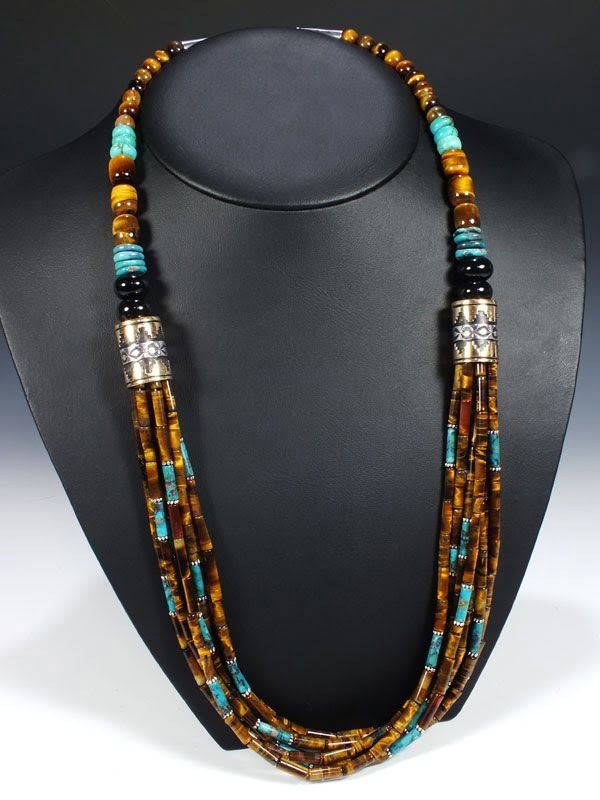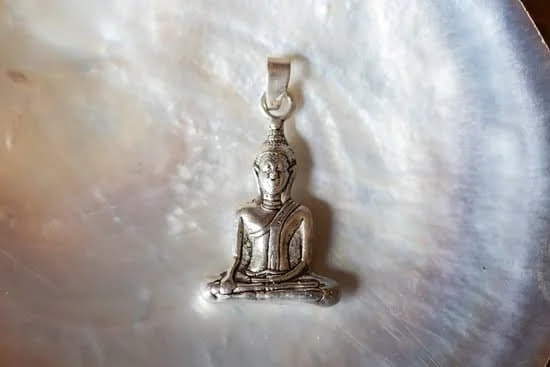Crystal jewelry has become increasingly popular in recent years, captivating the hearts and minds of people all around the world. With its undeniable allure and mystical charm, it’s no wonder that more and more individuals are embracing this unique form of adornment. But have you ever wondered what crystal jewelry is made of? Understanding the composition of these enchanting accessories can deepen our appreciation for their beauty and significance.
The rising popularity of crystal jewelry can be attributed to various factors. In a world filled with stress and chaos, many seek solace in the spiritual and healing properties associated with crystals. From their stunning colors to their intricate structures, crystals have long been revered for their calming and transformative energy. As we embark on this exploration of crystal jewelry, delving into what it’s made of will unlock a deeper understanding of its inherent power.
Crystals have captivated humans since ancient times, not just for their aesthetic appeal but also for their fascinating origins. These mineral formations form deep within the Earth’s crust under specific conditions involving heat, pressure, and minerals. The diversity of crystals is vast, ranging from clear quartz to vibrant amethysts and shimmering opals. Each crystal carries its own unique energy signature and metaphysical properties, making them prized treasures for those seeking balance and spiritual growth.
Intrigued by the allure of crystal jewelry? Join us as we unravel the mysteries behind this captivating art form and delve into what exactly crystal jewelry is made of.
From exploring the origins of crystals to unveiling their true essence and understanding how they are cut and shaped, we will leave no stone unturned in our quest to uncover the secrets behind these remarkable adornments. So grab your magnifying glass as we embark on an enlightening journey through the mystical world of crystal jewelry.
The Fascinating Origins of Crystal Formation
Crystals have captivated humans for centuries with their mesmerizing beauty and mystical properties. But have you ever wondered how these enchanting gemstones come into existence? The fascinating origins of crystal formation hold the key to unlocking their allure. From the immense heat of volcanic activity to the slow pressure deep within the earth’s crust, various factors contribute to the creation of crystals.
Formation in Nature
The formation of crystals is a natural process that occurs over millions of years. It begins when minerals solidify under extreme conditions, such as high temperatures and intense pressure. One common form of crystal formation is through volcanic activity, where molten rock cools rapidly, resulting in the formation of crystals. Another method involves gradual deposition of minerals over time, as seen in caves and geodes.
Factors Influencing Crystal Formation
Several factors influence crystal formation, including temperature, pressure, and chemical composition. Heat plays a crucial role as it provides the energy needed for atoms and molecules to arrange themselves into an organized lattice structure. Pressure also contributes to crystal formation by compressing minerals together tightly, forcing them to adopt specific shapes and structures. Moreover, different minerals result in distinct types of crystals due to variations in their chemical composition.
Diversity in Structure and Color
One of the most remarkable aspects of crystals is their diversity in structure and color. Depending on their composition and formation process, crystals can exhibit a wide range of shapes, sizes, and hues. Some common crystal structures include cubic (e.g., diamond), hexagonal (e.g., quartz), monoclinic (e.g., amethyst), and orthorhombic (e.g., topaz).
Likewise, crystals can be transparent or translucent with colors ranging from clear or white to vibrant shades such as red (e.g., ruby) or blue (e.g., sapphire). Each unique combination adds to the allure and appeal of crystal jewelry.
Understanding the origins of crystal formation provides a deeper appreciation for these breathtaking gemstones. The incredible forces and conditions that contribute to their creation result in an endless variety of shapes, colors, and structures. This knowledge paves the way for a comprehensive understanding of crystal jewelry and its enchanting characteristics.
Unveiling the True Essence of Crystal Jewelry
Crystal jewelry is not just a fashion statement, but also holds a deep spiritual significance for many individuals. Understanding the true essence of crystal jewelry is important in order to appreciate its unique characteristics and harness its metaphysical properties. In this section, we will delve into what crystal jewelry is made of and explore the different types of crystals commonly used in its creation.
Crystal jewelry can be defined as any piece of jewelry that incorporates natural or man-made crystals. These crystals are typically minerals that have a regular and repeating molecular structure, resulting in their distinct shape and color. The most commonly used crystals in jewelry making include quartz, amethyst, citrine, rose quartz, and labradorite, amongst others. Each crystal has its own set of unique properties and energies that are believed to enhance different aspects of one’s life.
Apart from the crystals themselves, crystal jewelry often incorporates various metals to create stunning and durable pieces. Sterling silver is a popular choice due to its affordability and versatility. Gold-plated brass is another common metal used in crystal jewelry design, offering a luxurious touch at an affordable price point. These metals provide a sturdy base for setting the crystals securely in place while adding aesthetic appeal.
| Commonly Used Materials | Description |
|---|---|
| Crystals | Natural or man-made minerals with distinct molecular structures |
| Sterling Silver | An alloy consisting of 92.5% silver and 7.5% other metals like copper for strength |
| Gold-Plated Brass | A layer of gold electroplated onto brass, creating a luxurious finish |
Crystal jewelry offers more than just aesthetic beauty; it allows individuals to carry the healing energies and vibrations of the crystals with them wherever they go. With each crystal holding its own unique properties, wearing crystal jewelry is a way to connect with these energetic qualities and support personal growth and well-being. So next time you admire a piece of crystal jewelry, take a moment to appreciate the delicate balance of materials that go into creating these cherished adornments.
Unearthing the Components
Crystal jewelry is made up of various components that contribute to its beauty, durability, and overall aesthetic appeal. Understanding what crystal jewelry is made of allows us to appreciate the craftsmanship and value of these exquisite pieces. In this section, we will delve into the materials commonly used in crystal jewelry production and explore the different variations of crystals used in these designs.
One of the key components in crystal jewelry is the metal used for crafting the setting or framework that holds the crystals in place. Sterling silver is a popular choice due to its durability, affordability, and ability to complement a wide range of crystal colors. Gold-plated brass is another common metal used for its luxurious appearance and versatility in design.
In addition to metals, crystals are at the heart of crystal jewelry. These stones come in a variety of types, each with its own unique properties and qualities. Gemstones like amethyst, quartz, citrine, and topaz are highly sought after for their vibrant hues and natural brilliance. Semi-precious stones such as rose quartz, jade, and lapis lazuli also play a significant role in adding depth and character to crystal jewelry designs.
| Component | Examples |
|---|---|
| Metal | Sterling silver, gold-plated brass |
| Crystals | Gemstones (amethyst, quartz), semi-precious stones (rose quartz, jade) |
These elements work harmoniously together to create stunning pieces of crystal jewelry that cater to individual preferences and styles. The combination of precious metals with carefully selected crystals enhances not only the physical beauty but also the metaphysical properties associated with crystal jewelry.
By understanding the components that make up crystal jewelry, enthusiasts and potential buyers can make informed decisions when selecting pieces that resonate with them both aesthetically and energetically. Whether it’s the elegance of sterling silver or the vibrant energy of gemstones, each component contributes to the allure and captivation of crystal jewelry.
The Art of Crystal Cutting and Shaping
One of the key aspects that sets crystal jewelry apart from other types of jewelry is the artistry and skill involved in cutting and shaping the crystals. The process of transforming a raw crystal into a beautiful piece of jewelry requires precision and expertise, resulting in stunning pieces that showcase the unique characteristics of each crystal.
The importance of cutting and shaping crystals in jewelry making cannot be understated. Crystals are naturally formed with rough edges and irregular shapes. Through cutting and shaping, these raw stones are transformed into smooth, polished gems that enhance their natural beauty. The cuts made on a crystal can greatly affect its appearance, highlighting certain features or creating dazzling reflections that catch the light.
Traditional techniques such as faceting involve cutting flat surfaces onto the crystal to create geometric shapes like squares, rectangles, or triangles. This technique amplifies the crystal’s sparkle and brilliance by maximizing its ability to reflect light. On the other hand, freeform cuts allow for more creative designs that follow the natural contours of the stone. These cuts emphasize a stone’s unique shape, resulting in organic and visually captivating designs.
Modern techniques have also revolutionized crystal cutting, allowing for intricate patterns like starbursts or checkerboards to be carved into the surface of gemstones. Advanced technology has made it possible to achieve precision cuts with laser-like accuracy, giving jewelry designers even more freedom to create innovative and detailed designs.
Crafting crystal jewelry requires skilled craftsmanship and an understanding of how different types of crystals respond to various cutting techniques. The knowledge possessed by these artisans is indispensable in turning raw crystals into wearable works of art that capture both light and attention. Next time you admire a piece of crystal jewelry, take a moment to appreciate not only its beauty but also the talent behind its creation through meticulous cutting and shaping methods.
Diving into Crystal Jewelry Designs and Styles
When it comes to crystal jewelry, the options are truly endless. From classic designs to contemporary trends, there is something for everyone. The world of crystal jewelry offers a myriad of design options that allow individuals to express their unique style and personality.
One popular design option for crystal jewelry is the use of natural crystals in their raw form. These uncut and unpolished crystals showcase the natural beauty and uniqueness of each stone. They can be incorporated into various types of jewelry, such as pendants, earrings, or rings, creating a bold and organic look.
For those who prefer a more refined and elegant style, there are intricately cut crystals available in different shapes and sizes. Faceted crystals catch the light beautifully, creating a mesmerizing sparkle that enhances any outfit. Their geometric shapes add a touch of sophistication to both casual and formal ensembles.
In addition to the varied designs, crystal jewelry also embraces cultural influences and fashion trends. Different cultures have longstanding traditions associated with specific crystals or symbols, resulting in distinct styles that reflect their heritage. Moreover, fashion trends play a significant role in shaping crystal jewelry designs, influencing everything from color choices to statement pieces.
Whether you prefer minimalistic dainty necklaces or bold statement rings adorned with oversized crystals, there is a style suited for every taste within the realm of crystal jewelry. The diverse designs allow individuals to not only wear beautiful accessories but also connect with the energies and metaphysical properties associated with their chosen crystals. So dive into the fascinating world of crystal jewelry designs and styles – it’s time to find the perfect piece that speaks to your soul.
Harnessing the Energy
Crystal jewelry is not just a fashionable accessory; it is also believed to possess various metaphysical properties that can enhance well-being and promote spiritual growth. Many individuals are drawn to crystal jewelry not only for its beauty but also for the energetic benefits it may offer. In this section, we will explore the concept of harnessing the energy of crystal jewelry and delve into some popular crystals known for their unique properties.
Belief in Crystal Healing Properties
Crystal healing is based on the belief that different crystals have distinct vibrations or energies that can interact with our own energy fields, promoting balance, healing, and an overall sense of well-being. It is believed that wearing crystal jewelry allows these energetic properties to resonate with our own energy centers, or chakras, aiding in physical, emotional, and spiritual healing.
Understanding Energetic Effects
There are various theories behind the energetic effects of wearing crystal jewelry. One common theory is that crystals emit certain frequencies or vibrations that correlate with specific intentions or qualities. For example, amethyst is often associated with relaxation and spiritual growth while rose quartz is known as the stone of love and compassion.
Another theory suggests that crystals have piezoelectric properties, meaning they generate an electric charge when subjected to pressure. This charge is believed to interact with our own electromagnetic field, stimulating positive changes at a subtle level.
It’s important to note that while many individuals swear by the benefits of crystal jewelry for their personal well-being, scientific evidence supporting these claims is limited. The effects of crystals are highly subjective and vary from person to person.
Popular Crystals for Enhanced Well-being
There are countless types of crystals used in jewelry making, each associated with different metaphysical properties. Some commonly used crystals include:
- Clear Quartz: Known as a master healer, clear quartz amplifies energy and promotes clarity of mind.
- Amethyst: Believed to enhance spiritual awareness and aid in meditation, amethyst is often used for calming the mind and relieving stress.
- Rose Quartz: Often referred to as the stone of love, rose quartz is associated with emotional healing, self-love, and compassion.
- Citrine: Considered a stone of abundance and manifestation, citrine is believed to attract prosperity and success.
- Labradorite: Known for its iridescent play of colors, labradorite is thought to enhance intuition and provide protection against negative energies.
It’s essential to choose crystals based on personal preferences and individual needs. It’s recommended to research each crystal’s properties before making a purchase to ensure compatibility with your intentions.
In the next section, we will discuss practical tips for maintaining and caring for your crystal jewelry to ensure its longevity and energetic effectiveness.
Maintaining and Caring for Crystal Jewelry
Proper Cleaning Techniques for Crystal Jewelry
To keep your crystal jewelry looking its best, it is important to regularly clean and care for it. However, due to the delicate nature of crystals, it is essential to use gentle cleaning techniques to avoid causing damage. Begin by using a soft, lint-free cloth to gently wipe away any dust or smudges on the surface of the crystals. Be sure to avoid using harsh chemicals or abrasive materials that can scratch or dull the crystals.
For a deeper clean, you can create a mild cleaning solution using warm water and a small amount of mild dish soap. Place your crystal jewelry in the solution and let it soak for a few minutes. Then, use a soft brush, such as a toothbrush with soft bristles, to gently scrub away any dirt or residue. Rinse the jewelry thoroughly with lukewarm water and pat dry with a clean cloth.
Storing Crystal Jewelry Properly
When not wearing your crystal jewelry, it is crucial to store it properly to protect it from scratches and damage. One simple yet effective method is to individually wrap each piece of jewelry in a soft cloth or tissue paper before placing them in a jewelry box or pouch. This will prevent them from coming into contact with other pieces that may cause friction and scratching.
Additionally, consider storing your crystal jewelry in a cool and dry place away from direct sunlight. Heat and prolonged exposure to sunlight can cause fading or discoloration of some crystals over time. By following these storage precautions, you can ensure that your crystal jewelry stays in optimal condition for years to come.
Avoiding Common Mistakes
While caring for your crystal jewelry, there are several common mistakes that should be avoided. Firstly, never expose your crystals to harsh chemicals such as bleach or strong cleaning agents as they can damage or dull their shine. Similarly, avoid using ultrasonic cleaners or steamers, as the intense vibrations and heat can cause fractures in certain types of crystals.
It is also important to remove your crystal jewelry before engaging in any vigorous physical activities or exposing it to excessive moisture. Crystals can be fragile and may become damaged if they are subjected to impact or excessive moisture for prolonged periods.
By following these tips and techniques for maintaining and caring for your crystal jewelry, you can ensure that your precious pieces retain their beauty and sparkle for years to come.
The Ethical Aspect
In recent years, there has been a growing awareness and concern regarding the ethical aspect of sourcing and sustainability in various industries. Crystal jewelry is no exception. As consumers become more mindful of the impacts their purchases have on the environment and local communities, it is important to address the ethical considerations surrounding crystal jewelry.
The mining and sourcing of crystals can sometimes involve harmful practices such as environmental damage, unsafe working conditions, and exploitation of local communities. It is crucial for consumers to be informed about these issues and make conscious choices when purchasing crystal jewelry.
Fortunately, there are certifications and initiatives that promote responsible sourcing of crystals. For example, the Kimberly Process Certification Scheme ensures that diamonds are sourced from conflict-free zones, while organizations like Fairtrade work towards fair wages and safe conditions for gemstone miners.
Additionally, consumers now have alternative options when it comes to crystal jewelry. Lab-grown crystals are becoming increasingly popular as they offer a sustainable and ethical alternative to mined stones. These crystals are created in controlled environments with minimal impact on the environment and eliminate any concerns regarding human rights abuses associated with traditional mining practices.
As we continue to explore the mystical world of crystal jewelry, it is essential to consider its impact on people and the planet. By supporting responsible sourcing practices or opting for lab-grown stones, we can enjoy the beauty and energy of crystal jewelry while ensuring that our choices align with our values and contribute towards a more sustainable future.
Frequently Asked Questions
What is Swarovski crystal jewelry made of?
Swarovski crystal jewelry is made of a high-quality lead glass that is manufactured by the Swarovski company. This lead glass contains a special composition that gives it its distinct brilliance and sparkle. The crystal is precision-cut with great attention to detail, resulting in facets that reflect light in a dazzling manner.
The manufacturing process involves a combination of natural minerals, such as quartz sand and minerals from the Alpines, along with chemical additives that enhance the characteristics of the glass. Swarovski crystal jewelry is known for its exceptional clarity, vibrant colors, and beautiful craftsmanship.
How can you tell if jewelry is crystal or glass?
Distinguishing between crystal and glass can sometimes be challenging, but there are a few key characteristics to look for when trying to determine which material it is. Crystal tends to have greater clarity and transparency compared to glass. It often exhibits a higher refractive index, meaning it disperses light more dramatically and creates more sparkle or brilliance than ordinary glass.
Moreover, if you examine the edges of the piece, crystal may show fine lines or bubbles within due to the manufacturing process, while glass typically has smoother edges without such imperfections. Additionally, one can consider factors such as weight; crystal pieces usually feel heavier than ordinary glass due to their lead content.
What are crystals jewelry?
Crystal jewelry refers to any type of jewelry that incorporates crystalline materials into its design or composition. Crystals are solid materials with an ordered arrangement of atoms or molecules that form a regular repeating pattern extending in three dimensions. In terms of jewelry, crystals can refer to various gemstones like diamonds or precious stones such as rubies and emeralds which possess distinct crystalline structures naturally occurring in nature.
However, when referring specifically to “crystal” jewelry (like Swarovski crystals), it commonly denotes lead glass with exceptional clarity and brilliance created through manufacturing processes rather than being natural minerals or gemstones extracted from mines. Crystal jewelry is valued for its exquisite craftsmanship and ability to catch and reflect light, adding elegance and sparkle to any outfit.

Welcome to my jewelry blog! My name is Sarah and I am the owner of this blog.
I love making jewelry and sharing my creations with others.
So whether you’re someone who loves wearing jewelry yourself or simply enjoys learning about it, be sure to check out my blog for insightful posts on everything related to this exciting topic!





